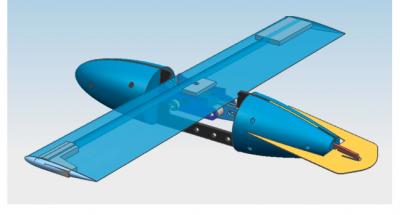Future Airplanes May Be More Fuel efficient

Engineers in California and South Africa are re-thinking the ubiquitous tube-and-wings aircraft architecture in order to make airplanes more fuel efficient.
The modern airplane design works well, but from a fuel efficiency standpoint, could planes be designed more aerodynamically -- to lower drag and increase lift? Geoffrey Spedding, an engineer at the University of Southern California, and Joachim Huyssen at Northwest University in South Africa, felt they could in theory, but they lacked experimental evidence. Now they have it.
Spedding and Huyssen have made a simple modular aircraft in three configurations: a flying wing alone, then wings plus body, and then wings plus body and a tail. It turns out that they had independently re-designed a bird shape, but without specific reference to anything bird-like. They will present their experimental data with these three designs, today at the American Physical Society Division of Fluid Dynamics meeting in Long Beach, CA.
They started with a configuration where the entire plane is one big wing. Then they added a body designed to minimize drag and, most critically, a small tail, which essentially serves to undo aerodynamic disturbances created by the body. Spedding and Huyssen analyzed the airflows and at various relative angles for the wings, body and tail, searching for ways to achieve greater lift (the better for carrying cargo) and lower drag (for higher fuel efficiency). They made the stipulation that for any given mission, the best plane is the one that generates the least drag.
The flying wings alone provide an ideal (but impractical) baseline, since it's hard to carry people or cargo in such a shape. The presence of a body, unfortunately, immediately lowers the lift and increases the drag. The addition of just the right kind of tail, however, can restore the lift, and reduce the drag, occasionally to nearly wing-only levels.
A few years ago a glider with the modest tail design was successfully test flown, but larger and commercial test prototypes have not yet been tried. Spedding recognizes that the design of real planes is necessarily a compromise of many engineering, economic and psychological constraints. Nevertheless, he believes much can be done to make planes more energy efficient in the future.
"The most important point is that we may be wasting large amounts of fossil fuel by flying in fundamentally sub-optimal aircraft designs," says Spedding. "At the very least, we can show that there exists an alternative design that is aerodynamically superior. One may argue that there is now an imperative to further explore this (and perhaps other) designs that could make a significant difference to our global energy consumption patterns."